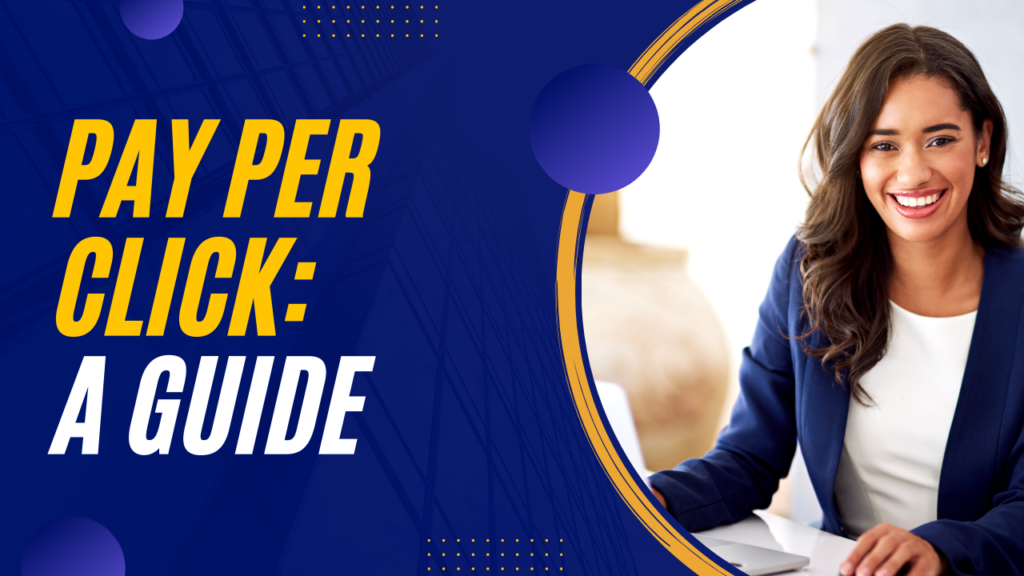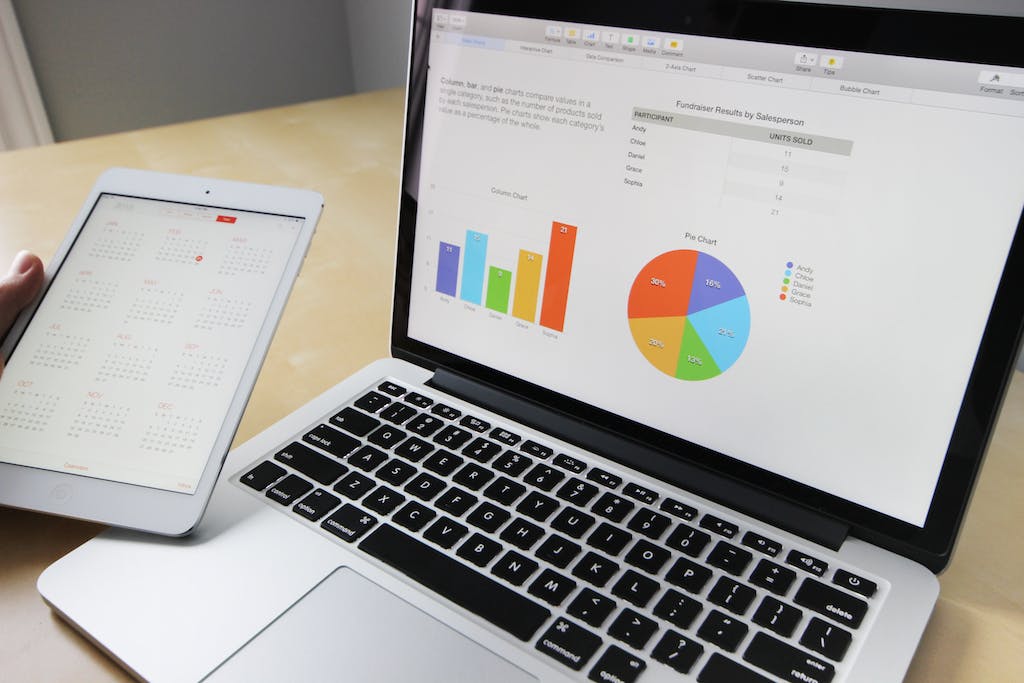What is Pay Per Click?
Digital marketing is a field that is constantly evolving. Pay Per Click (PPC), one of the major branches of digital marketing, is an advertising platform that stands tall as a formidable tool for businesses aiming to boost their online presence and drive conversions. Essentially, PPC is an internet marketing model where advertisers pay a fee each time their ad is clicked.
Operating across various search engines and platforms like Google Ads and social media channels, PPC ensures that advertisers only pay for actual engagement, making it a cost-effective and efficient marketing strategy. Let’s delve deeper into the world of PPC advertising and unlock its vast potential.
Key Pay-Per-Click Platforms

In the world of digital advertising, choosing the right pay per click platforms is crucial for getting your message in front of the right people. Let’s explore some of the main platforms that businesses use to reach their audience effectively.
Google Ads

Google Ads stands as a cornerstone in the realm of PPC advertising, offering a diverse array of channels to connect with potential customers. From appearing in search results to displaying ads on websites, videos, and apps, Google Ads provides businesses with extensive targeting options, budget control features, and insightful analytics tools. Its user-friendly interface and broad reach make it a go-to choice for businesses seeking to enhance their online visibility and drive conversions.
Microsoft Advertising

Formerly known as Bing Ads, Microsoft Advertising offers a valuable alternative for businesses looking to expand their reach beyond Google’s ecosystem. With access to millions of users through Bing, Yahoo, AOL, and Microsoft’s syndicated partners, this platform mirrors many features found in Google Ads, including keyword targeting, ad extensions, and audience segmentation. Microsoft Advertising provides businesses with an opportunity to tap into a diverse audience base and maximize their advertising impact across multiple search engines.
Amazon Sponsored Products

For businesses operating in the e-commerce sphere, Amazon Sponsored Products presents a strategic avenue to promote their products directly within Amazon’s vast marketplace. By leveraging keyword targeting, product placement ads, and detailed reporting metrics, advertisers can enhance their product visibility, drive sales, and optimize their presence on the platform. With millions of shoppers turning to Amazon for their purchasing needs, Sponsored Products offer businesses a direct route to engage with a highly motivated audience and capitalize on their purchasing intent.
Facebook & Instagram Ads

With billions of active users worldwide, Facebook and Instagram serve as influential platforms for businesses to connect with their target audience through engaging visual content. Offering a variety of ad formats, including images, videos, carousels, and stories, these platforms enable advertisers to craft compelling campaigns tailored to their audience’s preferences. With sophisticated targeting options based on demographics, interests, and behaviors, businesses can reach the right people at the right time, driving brand awareness, website traffic, and conversions.
PPC Capabilities on Other Platforms
Beyond the major players, several other platforms offer PPC advertising options tailored to specific audiences and objectives. LinkedIn Ads provide a valuable platform for B2B targeting, allowing businesses to connect with professionals and decision-makers in their industry. Twitter Ads enable real-time engagement with a highly engaged audience, while Pinterest Ads offer a visually immersive experience ideal for showcasing products and driving inspiration. Additionally, platforms like Snapchat and TikTok continue to gain traction among younger demographics, providing unique opportunities for businesses to connect with Gen Z and millennial audiences through creative and engaging content.
Understanding the strengths and capabilities of key PPC platforms is essential for businesses looking to optimize their advertising strategies and achieve meaningful results. Whether leveraging Google Ads, Microsoft Advertising, Amazon Sponsored Products, or ads on social media platforms like Facebook and Instagram, choosing the right platform is crucial for driving engagement, generating leads, and ultimately, driving business growth in today’s competitive digital landscape.
Setting Up a PPC Campaign
Launching a successful PPC campaign demands a strategic approach. Here’s a simplified, step-by-step process to guide you through the setup:
Step 1: Define Keywords and Landing Pages
Process/Action: Begin by conducting keyword research to identify relevant terms that potential customers might use when searching for your products or services. Once you’ve selected your keywords, ensure your landing pages are optimized to match these keywords, providing users with a seamless experience.
Value: Keyword research ensures that your ads are shown to the right audience at the right time, increasing the likelihood of clicks and conversions. Optimized landing pages improve user experience and can lead to higher conversion rates.
Tools Needed:
- Google Keyword Planner: Helps identify relevant keywords and provides insights into search volume and competition.
- SEMrush or Ahrefs: Offers competitive keyword analysis and helps identify additional keyword opportunities.
- Landing page builder (e.g., Unbounce, Instapage): Enables the creation of customized landing pages optimized for specific keywords.
Step 2: Establish Bids and Budgets
Process/Action: Determine how much you’re willing to pay for each click on your ads (bid) and set a daily or campaign-level budget to control your spending.
Value: Bidding strategically ensures that your ads remain competitive in auctions, increasing the likelihood of ad placement. Setting budgets prevents overspending and allows for better financial management of your campaigns.
Tools Needed:
- Google Ads or Microsoft Advertising: Provides bidding tools to help set optimal bid amounts based on keyword competitiveness and budget constraints.
- Bid Simulator (Google Ads): Predicts bid adjustments and estimates the impact on ad performance.
- Budget management tools (e.g., Google Ads’ Budget Planner): Helps forecast future spending and adjust budgets accordingly.
Step 3: Craft Compelling Text Ads
Process/Action: Write persuasive ad copy that highlights your unique selling points and encourages users to click on your ads. Test different variations to identify which messages resonate best with your audience.
Value: Compelling ad copy increases ad relevance and click-through rates, driving more traffic to your website. A/B testing allows you to refine your messaging and improve ad performance over time.
Tools Needed:
- Google Ads: Provides a user-friendly interface for creating and managing text ads.
- Ad Preview and Diagnosis tool (Google Ads): Allows you to preview how your ads appear in search results and diagnose any issues.
- A/B testing tools (e.g., Google Ads’ Ad Variations): Enables you to test different ad copies and measure their effectiveness.
Step 4: Utilize Audience Targeting Options
Process/Action: Define your target audience based on demographics, interests, and behaviors. Tailor your ad campaigns to reach specific segments of your audience effectively.
Value: Audience targeting ensures that your ads are shown to users who are most likely to be interested in your products or services, improving the efficiency of your campaigns and maximizing your return on investment.
Tools Needed:
- Google Ads: Offers detailed audience targeting options based on demographics, interests, and behaviors.
- Google Analytics: Provides insights into your website visitors’ behavior and preferences, helping you better understand your audience.
- Remarketing tools (e.g., Google Ads’ Remarketing Lists for Search Ads): Allows you to re-engage users who have previously visited your website or interacted with your ads.
By following these steps and utilizing the recommended tools, you can set up a PPC campaign that effectively reaches your target audience and drives meaningful results. Constant monitoring and optimization are essential for maximizing the success of your campaigns.

Optimizing and Improving Performance
Ongoing optimization is key to achieving maximum effectiveness and driving superior results in the field of PPC advertising. Let’s delve into essential strategies for optimizing and improving performance:
A/B Testing Ad Creative and Landing Pages
Experimenting with different versions of ad creatives and landing pages through A/B testing allows you to identify the most compelling combinations. By testing variations in headlines, ad copy, imagery, and calls-to-action, you gain valuable insights into what resonates best with your target audience. This iterative process enables you to continuously refine your messaging and design to maximize click-through rates and conversions.
Adjusting Bids to Balance Budget with Conversions
Striking the right balance between bids and budget is essential for optimizing your pay per click campaigns. Regularly analyze your bidding strategy to ensure optimal allocation of resources. Increase bids for high-converting keywords to maintain competitiveness in auctions, while adjusting bids downward for less profitable ones to manage costs effectively. By finding the sweet spot between bid amounts and budget constraints, you can maximize your return on investment and drive meaningful results.
Monitoring Quality Score and Optimizing Relevance
Quality Score plays a critical role in determining ad rank and cost-per-click. Monitoring and optimizing your Quality Score is paramount for improving ad performance and reducing costs. Focus on enhancing relevance and user experience across ad copy, landing pages, and keyword targeting. By aligning your campaigns with user intent and providing a seamless user experience, you can boost Quality Score, increase ad visibility, and drive down costs.
Benefits of Optimizing and Improving Performance
Optimizing and improving performance in PPC campaigns offer a myriad of benefits, including:
- Maximized ROI: By continuously refining your strategies and focusing resources on high-performing areas, you can maximize the return on your advertising investment.
- Increased Conversions: A/B testing and optimization help identify the most effective ad creatives, landing pages, and bidding strategies, leading to higher conversion rates and more valuable leads.
- Cost Efficiency: Balancing bids and budgets ensures that you allocate resources effectively, optimizing your spend to achieve the best possible results within your budget constraints.
- Enhanced Competitiveness: Monitoring Quality Score and optimizing relevance enables you to maintain a competitive edge in the auction, improving ad visibility and reducing costs compared to competitors.
- Continuous Improvement: By embracing a culture of optimization, you foster a mindset of continuous improvement within your PPC campaigns, driving long-term success and growth.
By embracing strategies such as A/B testing, bid adjustment, and Quality Score optimization, you can maximize ROI, increase conversions, and maintain a competitive edge in the ever-evolving landscape of digital advertising.

Advanced PPC Strategies
Staying ahead requires adopting advanced strategies to maximize results in the ever-evolving realm of pay per click advertising. Let’s explore key tactics to elevate your campaigns:
Utilizing Audience Insights for Better Targeting
Harnessing audience insights enables precise targeting, ensuring your ads reach the right people at the right time. Leverage data on demographics, interests, and behaviors to create highly relevant campaigns. Platforms like Google Ads and Facebook Ads offer robust audience targeting tools, allowing you to tailor your messaging for maximum impact.
Optimizing Campaigns for Mobile Users
With the majority of internet traffic now coming from mobile devices, optimizing campaigns for mobile users is essential. Ensure your ads and landing pages are mobile-friendly and load quickly on smartphones and tablets. Consider mobile-specific ad formats and extensions to enhance user experience and drive conversions.
App and Video Ad Options
Explore opportunities beyond traditional search and display ads by incorporating app and video advertising into your strategy. Promote your mobile app through app install campaigns on platforms like Google Ads and Apple Search Ads. Additionally, capitalize on the growing popularity of video content with engaging video ads on YouTube and social media platforms.
Smart Bidding Automation Options
Embrace smart bidding strategies to automate bid management and maximize campaign performance. Utilize machine learning algorithms to adjust bids in real time based on factors like device, location, and audience intent. Platforms like Google Ads offer a range of smart bidding options, including Target CPA, Target ROAS, and Enhanced CPC, to optimize for your desired outcomes.
Advanced Tools for PPC
Taking advantage of advanced tools to streamline campaign management and gain deeper insights into performance is always a good idea and a smart investment. Here are some tools that’s worth exploring:
- SEMrush: A comprehensive SEO and PPC tool that provides competitive analysis, keyword research, and performance tracking features to inform your strategy and uncover new opportunities.
- Ahrefs: Another powerful SEO and PPC tool that offers in-depth backlink analysis, keyword research, and content exploration features to improve your search engine visibility and advertising effectiveness.
- SpyFu: A competitive intelligence tool that allows you to spy on your competitors’ PPC campaigns, uncovering their top-performing keywords, ad copy, and landing pages to inform your own strategy and gain a competitive edge.
- Optmyzr: A pay per click management platform that offers automation and optimization solutions to streamline campaign management and improve performance. Features include bid management, ad testing, and reporting tools to maximize ROI and efficiency.
- WordStream: A digital advertising platform that provides tools for keyword research, campaign optimization, and performance tracking across Google Ads, Microsoft Advertising, and Facebook Ads. It offers time-saving automation features and expert guidance to help you achieve your advertising goals effectively.
By incorporating these advanced PPC strategies and leveraging the right tools, you can elevate your advertising efforts, reach your target audience more effectively, and drive superior results in the competitive digital landscape.

Analyzing PPC Metrics
Analyzing PPC metrics is essential for understanding the effectiveness of your advertising efforts and optimizing performance. Let’s dive deep into key metrics, benchmark KPIs, and monitoring strategies:
Impressions, Clicks, CTR, Conversions, Cost per Conversion
Understanding these fundamental metrics provides valuable insights into the performance and impact of your PPC campaigns. Impressions and clicks indicate visibility and engagement, while CTR reflects ad relevance and user interest. Conversions measure the effectiveness of your campaigns in driving desired actions, while cost per conversion assesses efficiency and profitability.
Benchmark Metrics and KPIs to Aim For
Establishing benchmark metrics and KPIs helps gauge the success of your PPC campaigns and set achievable goals. Aim for a CTR above industry averages, a conversion rate that exceeds benchmarks, and a cost per conversion within your target acquisition cost. Continuously monitor and adjust your strategies to optimize performance against these benchmarks.
Dashboards for Monitoring Key Stats
Utilize pay per click management platforms and analytics tools to create customized dashboards for monitoring key metrics. Google Ads and Google Analytics offer comprehensive insights into impressions, clicks, conversions, and cost data. Customizable dashboards allow you to focus on the metrics most relevant to your goals, enabling informed decision-making and optimization.
PPC Challenges to Consider
PPC Advertising is not a new field that has little to no competitors. In this field, multiple businesses employing multiple professionals are gathered all with the intent of giving their business a competitive edge. Here are some PPC challenges to consider:
High Competition for Desirable Keywords
In the competitive arena of PPC advertising, securing visibility for desirable keywords poses a significant challenge. The disadvantage lies in escalating bidding costs, which can strain budgets and limit exposure for advertisers with constrained resources. This impediment compromises campaign effectiveness and ROI potential.
However, diligent keyword research to uncover long-tail and niche alternatives offers a solution. By targeting specific audience segments and refining ad relevance, advertisers can bolster Quality Score, mitigate costs, and amplify ad visibility, thereby navigating the challenge of high keyword competition more effectively.
Preventing Click Fraud
Click fraud represents a formidable obstacle in PPC campaigns, threatening ad budgets and distorting performance metrics. Illegitimate clicks inflate costs, skew data accuracy, and undermine campaign success. To combat this challenge, implementing robust click fraud detection tools and vigilantly monitoring traffic patterns are imperative.
Utilizing IP exclusion lists and stringent targeting parameters further fortifies defenses against fraudulent activity. By proactively addressing click fraud, advertisers safeguard their investments, uphold campaign integrity, and sustain the reliability of performance analysis, ensuring a more transparent and effective PPC ecosystem.
Maintaining Strong Yet Cost-Effective ROI
Balancing profitability with budget constraints amidst escalating competition poses a formidable challenge in PPC advertising. Failing to achieve a favorable ROI can result in wasted resources and diminished campaign effectiveness. However, continuous optimization efforts offer a solution. Through meticulous refinement of targeting strategies, ad messaging, and bidding tactics, advertisers can optimize campaign efficiency and mitigate costs.
Focusing on high-value keywords and audience segments maximizes ROI potential while preserving budgetary discipline. Regular monitoring and adjustment of campaign performance metrics further enhance ROI and ensure sustained success in the dynamic landscape of PPC advertising.
By acknowledging and addressing these challenges proactively, you can navigate the complexities of PPC advertising and drive sustainable success for your campaigns.
Frequently Asked Questions About Pay Per Click
How Can I Avoid Costly Mistakes in My PPC Campaigns?
To avoid costly PPC mistakes, conduct thorough keyword research, refine targeting, monitor metrics, and A/B test ad creatives. Stay updated on industry trends and seek guidance from PPC professionals for optimal results.
What’s the Best Strategy: PPC or SEO?
The best strategy depends on business goals. pay per click offers immediate visibility and control over spending, while SEO builds sustainable organic traffic. Combining both maximizes online presence and long-term growth.
What Trends Should I Watch Out for in PPC Marketing This Year?
Key trends include automation and AI-driven bidding, audience targeting, new ad formats like video, and integration of voice search optimization into PPC campaigns.
What’s the Future of Voice Search in PPC Advertising?
Voice search optimization is crucial for maintaining relevance and visibility in pay per click campaigns as voice-enabled devices become more prevalent.
Is There a Magic Formula for Writing Compelling Ad Copy?
While no one-size-fits-all formula exists, focus on addressing user pain points, highlighting unique selling points, and testing different ad variations for optimal performance.

… [Trackback]
[…] Info to that Topic: shanehummus.com/digital-marketing/pay-per-click/ […]
… [Trackback]
[…] Information to that Topic: shanehummus.com/digital-marketing/pay-per-click/ […]
… [Trackback]
[…] Here you can find 58660 more Info to that Topic: shanehummus.com/digital-marketing/pay-per-click/ […]
… [Trackback]
[…] There you will find 81793 additional Info to that Topic: shanehummus.com/digital-marketing/pay-per-click/ […]
… [Trackback]
[…] Here you will find 14434 additional Information on that Topic: shanehummus.com/digital-marketing/pay-per-click/ […]
… [Trackback]
[…] Read More Info here on that Topic: shanehummus.com/digital-marketing/pay-per-click/ […]
… [Trackback]
[…] Read More on that Topic: shanehummus.com/digital-marketing/pay-per-click/ […]
… [Trackback]
[…] Read More on to that Topic: shanehummus.com/digital-marketing/pay-per-click/ […]
… [Trackback]
[…] Find More Information here on that Topic: shanehummus.com/digital-marketing/pay-per-click/ […]
… [Trackback]
[…] Read More on that Topic: shanehummus.com/digital-marketing/pay-per-click/ […]
… [Trackback]
[…] Info on that Topic: shanehummus.com/digital-marketing/pay-per-click/ […]
… [Trackback]
[…] Read More Information here on that Topic: shanehummus.com/digital-marketing/pay-per-click/ […]
… [Trackback]
[…] Read More Info here on that Topic: shanehummus.com/digital-marketing/pay-per-click/ […]
… [Trackback]
[…] Find More Information here to that Topic: shanehummus.com/digital-marketing/pay-per-click/ […]
… [Trackback]
[…] Information to that Topic: shanehummus.com/digital-marketing/pay-per-click/ […]
… [Trackback]
[…] Read More on that Topic: shanehummus.com/digital-marketing/pay-per-click/ […]
… [Trackback]
[…] Information on that Topic: shanehummus.com/digital-marketing/pay-per-click/ […]
… [Trackback]
[…] Find More on that Topic: shanehummus.com/digital-marketing/pay-per-click/ […]
… [Trackback]
[…] Find More here on that Topic: shanehummus.com/digital-marketing/pay-per-click/ […]
… [Trackback]
[…] Read More on to that Topic: shanehummus.com/digital-marketing/pay-per-click/ […]
… [Trackback]
[…] Find More Info here on that Topic: shanehummus.com/digital-marketing/pay-per-click/ […]
… [Trackback]
[…] Read More Info here on that Topic: shanehummus.com/digital-marketing/pay-per-click/ […]
… [Trackback]
[…] Read More to that Topic: shanehummus.com/digital-marketing/pay-per-click/ […]
… [Trackback]
[…] Find More on that Topic: shanehummus.com/digital-marketing/pay-per-click/ […]
… [Trackback]
[…] Here you can find 29214 additional Information to that Topic: shanehummus.com/digital-marketing/pay-per-click/ […]
… [Trackback]
[…] Find More to that Topic: shanehummus.com/digital-marketing/pay-per-click/ […]
… [Trackback]
[…] Read More on on that Topic: shanehummus.com/digital-marketing/pay-per-click/ […]
… [Trackback]
[…] Read More Info here to that Topic: shanehummus.com/digital-marketing/pay-per-click/ […]
… [Trackback]
[…] Read More on that Topic: shanehummus.com/digital-marketing/pay-per-click/ […]